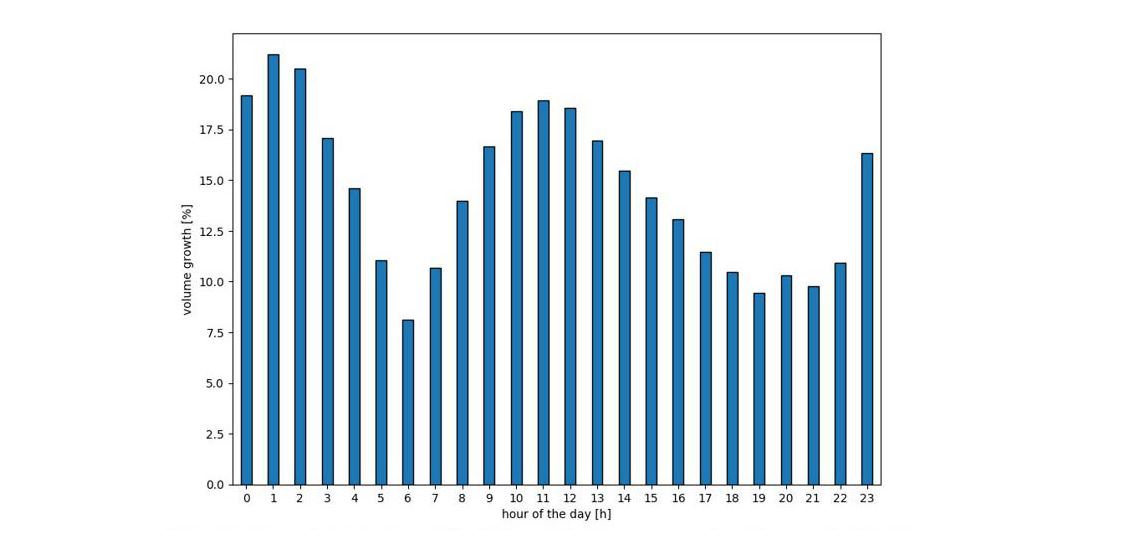The role of the network of subnetworks, once established for research purposes and now known as the Internet, has evolved within a few decades into an omnipresent communication and commercial ecosystem. At the end of 2018, more than 50% of the world’s population, 3.9 billion people from all countries of the world, were using the Internet – and the trend is growing. According to a Cisco forecast, by 2023 there will be 29.3 billion devices worldwide connected to the Internet (or 3.6 devices for every person on the planet), which will send and receive a total of 1,209 terabits per second (Tbps) of Internet traffic at peak times – the equivalent of about 48 million parallel Netflix 4K streams. According to these estimates, the data traffic of the future will therefore assume enormous proportions.
Covid-19 is changing the use of the Internet – is the Internet reaching its limits?
The major role the Internet now plays in our society is something we are becoming increasingly aware of – especially these days, in the wake of the Covid-19 crisis. Overnight, people were sent to work from home. We started using the Internet to stay in touch with friends and colleagues via video telephony. Small clubs that had previously only had a website began to use streaming to broadcast training sessions, and apart from that, the Internet is simply a source of entertainment in the form of online computer games or video streaming. As a result of these changes, a significant increase in data traffic has been recorded at various observation points on the Internet in recent weeks. At the world’s largest Internet Exchange in Frankfurt am Main, Germany, the Internet traffic transmitted at peak times has grown by more than 10% to 9.2 Terabits per second, at smaller Internet Exchanges (measured according to data throughput), such as DE-CIX Dusseldorf, traffic has even grown by more than 20%. In particular, the data traffic for services that are needed for working from home, such as Skype or Zoom, has increased in some cases by up to 100%. Online and cloud gaming traffic has increased by 50%.
In view of these significant changes in our Internet usage behavior, the following questions arise: How much short-term growth can the Internet actually sustain, and what are the limiting factors? The open Internet architecture was, over 50 years ago, initially conceived with important design decisions, such as the technological independence of the individual subnetworks, best-effort packet switching, and no global control. In detail, of course, the Internet and all the technologies involved have undergone enormous development – but many of the basic protocols and concepts (such as IP, BGP and TCP) have mostly only been extended in important details. The totality of these decisions is the basis for the phenomenal growth of the Internet over the last few decades. Therefore, it can easily handle short-term increases in data traffic, as we are currently seeing.
Subnetworks ensure stability
In a simplified representation, the structure of the Internet consists of three different types of subnetworks, each of which represents administrative domains and can thus be directly assigned to individual companies: End-user networks (DSL, UMTS/LTE or cable providers), transport networks, and service provider networks (from where services are transmitted, often known as content delivery networks, or CDNs). In order to be able to consume a video stream, a request from the user is sent to a server of the provider. The data packet is first transported in the end-user network (at the user’s end) to a transfer point, where it is either transferred to a transport network or directly to the network providing the service. These transfer points include Internet Exchanges such as DE-CIX in Frankfurt. If a transport network is connected in between, this ensures delivery through its global backbone.
In order to understand where potential bottlenecks may arise in the current crisis, it is necessary to look more closely at the three components mentioned above: The end-user networks, i.e. those subnetworks that provide us with a broadband connection, such as DSL, UMTS/LTE or cable, transport networks, which in simple terms represent all networks between the end-customer network and the network providing the service, and service provider networks. In a crisis such as the current one, bottlenecks can arise in these three types of networks due to a sharp increase in data traffic.
The limiting factor in the end-user network may, for example, be the connection capacity of the DSL connection, in this case, therefore, more a commercial restriction than a technical one. More important for this question is that end-user network operators must maintain sufficient capacity within their network. Sufficient capacity must be available at all times to transport the necessary data traffic from households or offices through the end-user networks to the transfer points, and from there to other networks (such as transport or service provider networks).
In order to prevent limited data traffic at the end user, not all content in today’s modern Internet is transported directly from the respective CDN servers to the end customer. Frequently, popular content is already made available on servers that are located directly in the end-user network and only need to be transferred there once. A popular new film offered on streaming platforms only has to be transferred once to what is known as a cache server in the end-user network – this applies to up to 50% of cases today. For the final delivery to the customers, the network capacity must still be kept available at the end customer’s end, but this offers considerable savings potential at the network gateways (previously described as transfer points).
Network gateways as bottlenecks
Potential bottlenecks can also occur at the network gateways. This refers to the critical links and transfer points between the individual subnetworks (end-user networks, transport networks, and service provider networks) which unite the entire ecosystem of networks within the Internet. From a technical point of view, the interconnection of these subnetworks can be by means of a direct fiber-optic connection, or via one of the 880 Internet Exchanges worldwide.
It is precisely these network gateways that can become the bottlenecks of the Internet if they are not sufficiently upgraded, thus limiting the availability of services in the face of explosive growth in data traffic. The exchange platforms of Internet Exchanges, for example, offer sufficient capacity on a continuous basis and are generally only used at around 50% capacity. Consequently, the connections (i.e. the connected capacities) of the participating subnetworks, which exchange their data traffic at the Internet Exchange, are the limiting factor here. If more data traffic is to flow from all subnetworks connected to the Internet Exchange (e.g. end-user networks) to another subnetwork (e.g. service provider network) than the latter has access capacity at the Internet Exchange, part of the data traffic is inevitably discarded. Typical connection capacities allow transmission rates of 1 Gbps, 10 Gbps, 100 Gbps or even 400 Gbps, which can be increased or combined as desired.
In addition to considering the service provider network itself and the connection capacity at network transitions such as an Internet Exchange, service providers must of course also maintain sufficient server infrastructure to cope with the current increase in usage. It also makes sense to bring the corresponding servers closer to the end customers. Netflix films that are streamed in Germany, for example, are not stored in an American data center, but in a German one.
The world’s largest Internet Exchange as a blueprint for the Covid-19 changes in data traffic
In a more detailed analysis at the DE-CIX Internet Exchange in Frankfurt am Main, as well as at the location DE-CIX Madrid, a breakdown of the data traffic into different service classes – Video on Demand (VoD), Collaborative Working, and Gaming – was carried out, investigating the volume of data traffic and the number of users over a period of several weeks (before and during the restrictive measures caused by Covid-19). This results in three curves, each for maximum, average and minimum data traffic.



